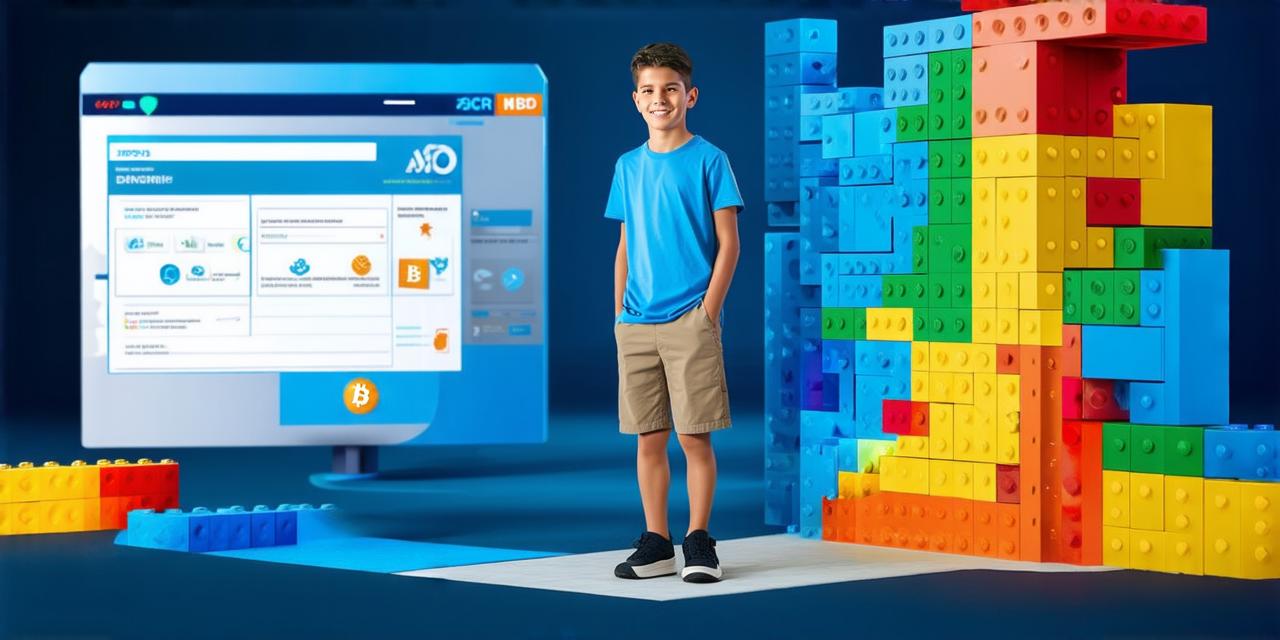Emphasize the importance of transparency and security
It’s important to explain to children why blockchain is so secure and transparent. You could say that just like a lock keeps your toys safe in a toy box, a blockchain keeps information safe and secure on a computer. And because everyone can see everything that happens on a blockchain, it’s very hard for anyone to cheat or lie about what happened.
Use real-life examples
One way to make blockchain more relatable to children is to give them real-life examples of how it works. For example, you could talk about how Bitcoin uses blockchain technology to let people buy things online, or how a supply chain company uses blockchain to keep track of their products from the factory to the store.
How does Blockchain work?
At its core, blockchain is a decentralized database that is managed by a network of computers. Each computer on the network has a copy of the entire database, which means that there is no single point of failure. Instead, information is stored in blocks that are linked together chronologically.
Each block contains a record of transactions or other data that has been verified and agreed upon by the network. Once a block is added to the chain, it cannot be altered or deleted. This makes the data on a blockchain very secure and tamper-proof.
One of the key features of blockchain is that it allows for decentralized decision-making. This means that there is no need for a central authority or intermediary to manage transactions or resolve disputes. Instead, this is done through consensus, where the majority of the network must agree on a course of action before it can be implemented.
Why is Blockchain important?
Blockchain technology has the potential to revolutionize many industries by providing a more secure and efficient way to share information. Here are some reasons why blockchain is important:
- Transparency: One of the key benefits of blockchain is that it provides transparency. Because all data on a blockchain is stored in an open ledger, anyone can view and verify the transactions taking place.
- Decentralization: Blockchain is decentralized, which means that there is no need for a central authority or intermediary to manage transactions or resolve disputes. This reduces the risk of fraud and increases efficiency by eliminating the need for middlemen.
- Security: Data on a blockchain is very secure because it is stored in an immutable ledger. Once data is added to a blockchain, it cannot be altered or deleted, which makes it very difficult for hackers to tamper with.
- Efficiency: Blockchain technology can streamline many processes by eliminating the need for intermediaries and automating many tasks. This can result in faster and more efficient transactions, as well as reduced costs.

Real-Life Examples of Blockchain
There are many real-life examples of how blockchain is being used to share information securely and transparently. Here are a few:
- Cryptocurrencies: Cryptocurrencies like Bitcoin, Ethereum, and Litecoin are digital currencies that use blockchain technology. These currencies can be used to buy things online or traded on stock exchanges, just like traditional currencies like the US dollar or euro.
- Supply Chain Management: Blockchain is being used to improve supply chain management in industries like food, pharmaceuticals, and electronics. By keeping a transparent ledger of every step in the supply chain, blockchain can help prevent fraud, ensure that products are safe and authentic, and reduce waste.
- Identity Verification: Blockchain technology is being used to create secure and tamper-proof identity verification systems. This can be particularly useful for online transactions, where it can be difficult to verify the identity of the person making the transaction.
- Voting Systems: Blockchain is being used to create secure and transparent voting systems. By using blockchain technology, it is possible to create a tamper-proof ledger of every vote cast, which can help prevent fraud and ensure that the results of an election are accurate.
